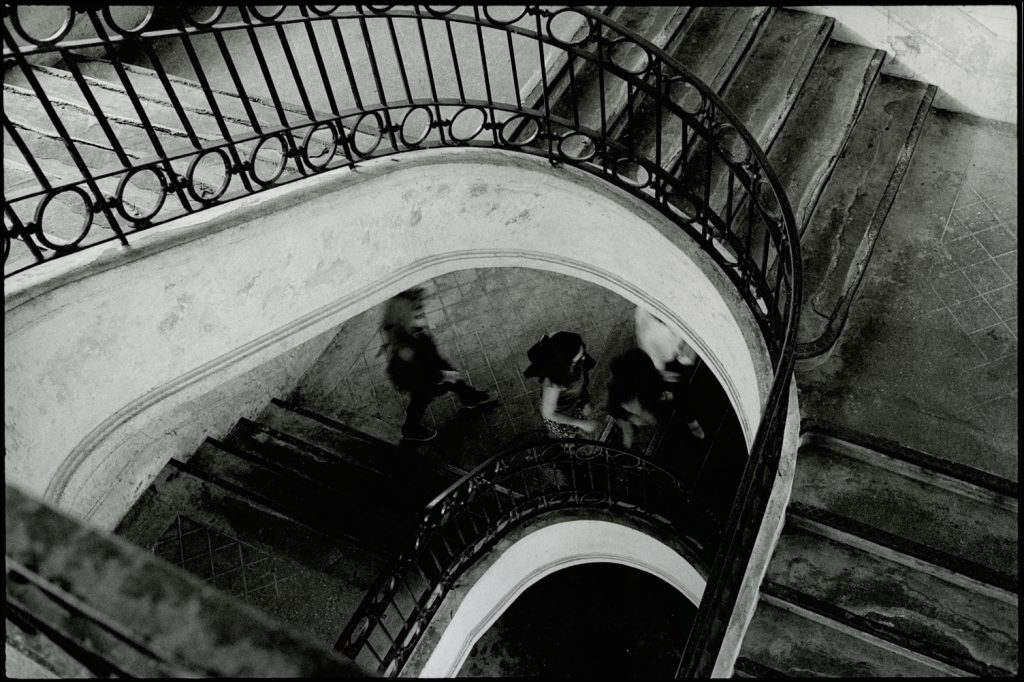
Porto 2014. Copyright Aurélien LE DUC
BERGGER Prestige Warm Tone Paper 3 types of warm tone papers coated on a double-weight base (280 gsm). They deliver outstanding prints. They are able to produce both soft picture, and a hard grade picture, due to the incorporated sensitizers (blue and red sensitizers) in the emulsion. Using multigrade filters, grades from 0 to 5 can be achieved by half grade steps. It belongs to the family of chlorobromide papers, therefore, DMax is very high.
BERGGER Prestige Variable CB Style
Warmtone baryta paper.
The surface is semi-glossy, and the base is ivory.
Characteristics:
- sensitivity ISO R : 200 (without filter)
- DMax before toning : 2.0
- Safelight : Ilford 902
BERGGER Prestige VARIABLE CB
Warmtone baryta paper.
The surface is glossy.
Characteristics:
- sensitivity ISO R : 200 (without filter)
- DMax before toning : 2,3
- Safelight : Ilford 902
BERGGER Prestige VARIABLE CM
Warmtone baryta paper.
The surface is matte.
Characteristics:
- sensitivity ISO R : 200 (without filter)
- DMax before toning : 1.8
- Safelight : Ilford 902
Datasheet for all 3 papers:
| HANDLING | A red safelight (such as one fitted with a Wratten 1A filter) is recommended. With a 15 watt bulb used direct illumination, minimum working distance is 1.5 meters (5 feet). Safelight exposure longer than 2 minutes may lead noticeable fog. It is a good idea to test for safelight fog time-to-time. |
| EXPOSURE | Can be exposed with any enlarger or printer light source. As with all VC papers, be aware that some older types of cold-light tubes may normally require more yellow filtration. Also, note that exposure times depend upon which filter is in place. For example : if 8 sec. is correct for filters number 0, 1 and 2 ; then filter 3 will require 9 sec. and filters 4 and 5 : 27 sec. |
| DEVELOPMENT | Process in any good paper developer at 20°C (68°F) for 1.5 to 2 min. with continuous agitation. BER-98 developer works particularly well with this paper. |
| STOP BATH | An acid stop bath is optional but recommended. It quickly stops development by neutralizing alkali. This also helps extend fixer life. Dilution: 45 cc of 28% acetic acid in 1 litre of water.
Treatment time : 15 sec. or 20 to 30 seconds if water rinse |
| FIXING (maximum time : 10 minutes) | Treat in a conventional sodium thiosulfate fixer for a minimum of 5 min. at 20°C (68°C). Normal fixer capacity is 1,5 sqm/litre. A two bath fixing method (at 2,5 min. per bath) may be used to avoid under-fixing. When the first bath is exhausted, replace it with the second bath and mix a fresh bath « second bath ». With ammonium thiosulfate (« rapid ») fixers, treat for 30 to 45 seconds only, then give a thorough pre-washed for 5 min. Next, treat with a wash aid (see « WASHING », below) with frequent agitation for 10 min. before transferring to a final wash. |
| WASHING | The use of a wash aid (such as Kodak Hypo Clearing Agent) will reduce your wash time and increase the efficiency of your washing. As well, it will help guarantee the permanence of your photograph. Wash PRESTIGE in running water at rate fast enough to completely change once every 5 minutes. Wash time is 1 hour at 20°C (68°F) or 30 min. if a wash aid has been used. |
| DRYING | To effect even and rapid drying, you may use a weeting agent as a final rinse. Excess water should be removed from the surface of prints with a clean sponge or rubber spatula. Prints may then be dried in dust-free air on drying screens or in a clean photo-blotter. |
| FINISHING | May be toned, retouched, spotted and mounted using normal methods. |
